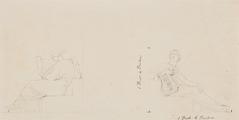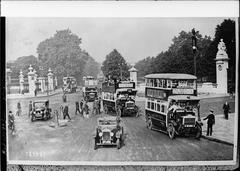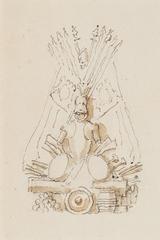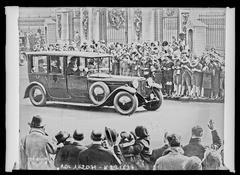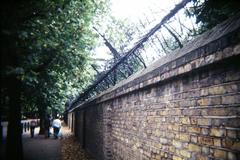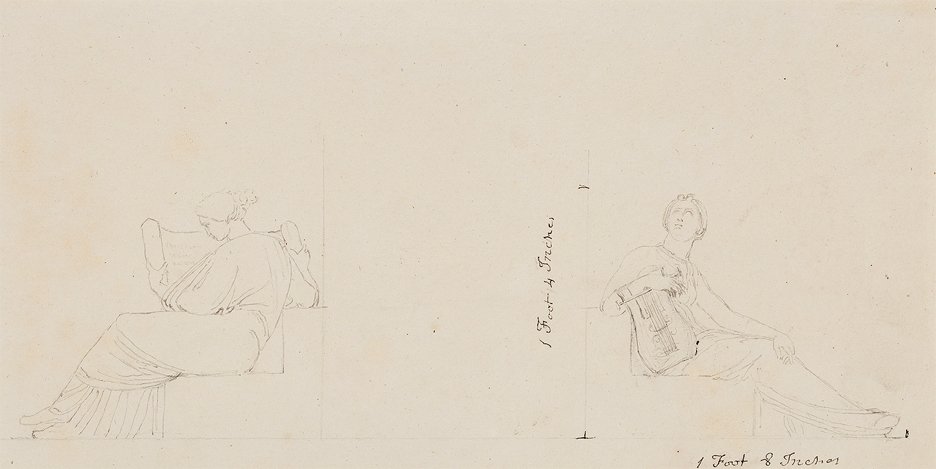
Buckingham Palace Visiting Hours, Tickets, and Visitor Guide for London Historical Sites
Date: 14/06/2025
Introduction
Buckingham Palace stands as one of London’s most celebrated landmarks, offering a unique portal into British history, monarchy, and culture. As the official London residence of the British monarch since 1837, this neoclassical palace is a symbol of national identity, architectural grandeur, and ceremonial tradition. Visitors from around the world are drawn to its iconic façade, grand State Rooms, and lush gardens, as well as to experiences like the famed Changing of the Guard ceremony.
This comprehensive guide covers all you need to know about visiting Buckingham Palace: its rich historical evolution, architectural highlights, visiting hours, ticketing details, accessibility, practical travel tips, and nearby attractions. For the most up-to-date information, refer to the Buckingham Palace Official Website and the Royal Collection Trust.
Table of Contents
- Historical Overview
- The Palace as a National Symbol
- Historical Events and National Celebrations
- Influence on Arts, Culture, and Identity
- Architectural Grandeur: Exterior and Interior
- Planning Your Visit: Hours, Tickets, and Tips
- Guided Tours and Events
- Structure and Modernization
- Visitor Experience
- Preservation and Future
- FAQs
- Conclusion and Call to Action
- Resources
Historical Overview
From Townhouse to Royal Residence
Buckingham Palace began its life in 1703 as Buckingham House, built for John Sheffield, Duke of Buckingham. Designed by William Winde, it was a grand but private townhouse overlooking St. James’s Park (History Tools; Royal Watcher Blog). In 1761, King George III acquired the property for Queen Charlotte, renaming it “The Queen’s House.” This marked the beginning of its royal association (History Hit; Buckingham Palace Official).
Transformation and Expansion
King George IV spearheaded the transformation of Buckingham House into a palace. He enlisted architect John Nash, who introduced neoclassical elements and created a U-shaped layout enclosing a central courtyard (7 Wonders). Nash’s project, completed in the 1820s, was notable for its grandeur and cost overruns, but it set the template for the palace as we know it today.
Becoming the Official Royal Residence
When Queen Victoria ascended the throne in 1837, she made Buckingham Palace the monarchy’s primary residence (Royal Watcher Blog). Her marriage to Prince Albert brought further expansions, notably the East Front and its famous balcony. The palace became the backdrop for royal balls, concerts, and state occasions (Buckingham Palace Official).
Architectural Evolution and Modernization
Throughout the 19th and 20th centuries, the palace was continuously enhanced. James Pennethorne added the ballroom and more State Rooms; Sir Aston Webb redesigned the main façade in 1913, giving the palace its current iconic look (London Scout; Royal Watcher Blog). Interiors were updated to reflect the tastes of successive monarchs and to showcase the Royal Collection (History Hit).
Buckingham Palace in Times of Crisis and Celebration
During WWII, the palace was bombed nine times. King George VI and Queen Elizabeth’s decision to remain in residence symbolized solidarity with the nation (Royal Watcher Blog; Buckingham Palace Official). The palace also hosts royal weddings, jubilees, and public celebrations, with the balcony as a focal point for national unity (London Scout).
The Palace as a National Symbol
Buckingham Palace is a powerful emblem of the British monarchy and nation. Its façade, balcony, and ornate gates symbolize continuity and tradition, while the Changing of the Guard ceremony is recognized around the world (museumsexplorer.com; monumentsandsights.com; loving-travel.com). The palace serves as the administrative headquarters of the monarchy, hosting state functions, diplomatic receptions, and ceremonial events.
Historical Events and National Celebrations
The palace has witnessed pivotal moments, from VE Day celebrations to royal weddings and jubilees (museumsexplorer.com). The balcony is used for public appearances during such events, fostering a sense of shared national identity.
Influence on Arts, Culture, and Identity
Buckingham Palace is home to the Royal Collection, featuring masterpieces by artists like Rembrandt and Canaletto (museumsexplorer.com; loving-travel.com). Its architecture and interiors have inspired literature, film, and television, and the palace gardens host cultural events such as the Royal Garden Parties (explorial.com; buckinghampalace.co.uk).
Architectural Grandeur: Exterior and Interior
Neoclassical Grandeur
The palace’s neoclassical style is evident in its symmetry, grand columns, and creamy Portland stone (Architecture Lab). The East Front and its central balcony are iconic, serving as the stage for royal appearances (The Daily English).
Gates, Forecourt, and Victoria Memorial
The palace is approached through ornate wrought iron gates and a grand forecourt, the site of the Changing of the Guard (Planet Travel Advisor). The Victoria Memorial, directly in front of the palace, adds to its monumental approach.
Gardens
The palace is set within London’s largest private garden, featuring a lake, formal flower beds, and mature trees (The Daily English; Architecture Lab).
Interior Layout and State Rooms
With 775 rooms—including 19 State Rooms open to visitors in the summer—the palace balances public, private, and administrative functions (Planet Travel Advisor). Notable State Rooms include:
- Throne Room: Site of official ceremonies and photos
- White Drawing Room: Opulent space for receptions
- Ballroom: Largest room for state banquets
- Picture Gallery: Displays masterpieces from the Royal Collection (The Tour Guy)
Planning Your Visit: Hours, Tickets, and Tips
Hours and Ticketing
- Visiting Season: State Rooms open to the public from mid-July to late September
- Typical Hours: 9:30 AM to 7:30 PM (last admission 5:15 PM); check for updates on Royal Collection Trust
- Ticket Prices (2025): Adults £32, seniors & students £29, children (5–17) £18, under 5s free; family and combination tickets available
- Booking: Advance online booking is strongly recommended (Royal Collection Trust)
Accessibility and Facilities
- Step-free access, wheelchair loans, and induction loops are available (Accessibility)
- Assistance dogs welcome
- Accessible toilets, baby-changing facilities, and cloakrooms on-site
Travel Tips and Nearby Attractions
- Transport: Green Park, St James’s Park, and Victoria Underground stations are within a 10–15 minute walk (Transport for London)
- Nearby Sights: St James’s Park, Westminster Abbey, Houses of Parliament, Churchill War Rooms
- Tips: Arrive early for Changing of the Guard; wear comfortable shoes; dress for variable weather
Guided Tours and Events
- Multimedia Guides: Included with entry, available in multiple languages and family-friendly versions
- Guided Tours: Expert-led tours may be available for an additional fee
- Special Events: Look for exhibitions, Royal Garden Parties, and seasonal highlights (Exhibitions; Changing the Guard)
Structure and Modernization
Ongoing restoration projects ensure the palace’s heritage is preserved while upgrading infrastructure for sustainability (Architecture Lab).
Visitor Experience
Visitors follow a self-guided route through 19 State Rooms, ending in the gardens. The experience typically lasts 2–2.5 hours. No photography inside State Rooms; permitted in the gardens and exterior areas.
Preservation and the Future
Balancing tradition and innovation, Buckingham Palace continues to modernize with restoration projects, sustainability initiatives, and digital engagement (museumsexplorer.com).
FAQs
What are Buckingham Palace visiting hours?
State Rooms are open mid-July to late September, typically 9:30 AM–7:30 PM. Check the official website for current times.
How do I buy tickets?
Book online in advance via Royal Collection Trust.
Is the palace accessible?
Yes, with step-free access, wheelchair loans, and facilities for those with disabilities.
Can I photograph inside?
No, photography is prohibited inside State Rooms but allowed in gardens and exterior areas.
What other attractions are nearby?
St James’s Park, Westminster Abbey, Houses of Parliament, and more.
Conclusion and Call to Action
Buckingham Palace is a living symbol of British history, culture, and national identity. Its blend of neoclassical grandeur, rich traditions, and modern visitor experience makes it a must-visit London historical site. For the best experience, plan ahead: check visiting hours, book tickets early, and explore nearby landmarks to immerse yourself in the city’s royal heritage.
Stay updated on visiting hours, ticket availability, and special events by downloading the Audiala app and following official sources. For more travel tips and guides, explore our related articles and connect with us on social media.
